Apple WWDC 2020 Live Update and What This Means for Mobile Brands
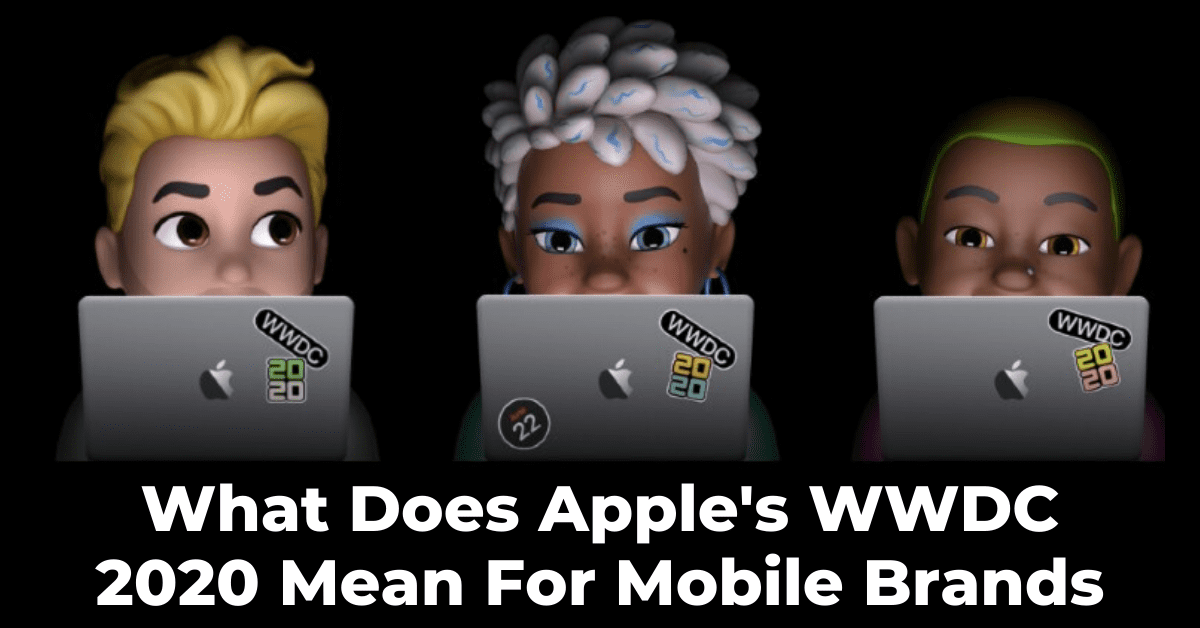
Reading Time: 10 minutes
Apple kicked off its annual Worldwide Developer Conference (WWDC) on June 23, 2020, and will go on till the 26th. This year, Apple decided to host the entire conference online due to the ongoing COVID-19 pandemic. Though the familiar excitement of the crowd, the cheering, and the gasping were all missed on the first day of the WWDC 2020, there were definitely more eyeballs on the event this year.
You can watch the video here:
What does Apple’s WWDC 2020 mean for mobile brands?
Note: This is a live update as we follow Apple’s announcements in this conference (Last updated: June 25, 2020, 1 AM PT)
This conference kicked off with the unveiling of iOS 14. This update comes with new and exciting features like App Clips, App Library, smarter widgets, an intelligent stacking mechanism, a new Siri experience, picture-in-picture, and much more! Here are a few highlights of the most important announcements for mobile brands:
1. App Clips are a boon to both mobile marketers and iOS 14 users
Apple realized that although apps are an essential part of the smartphone ecosystem, at times it is difficult for users to fulfill their specific needs. Apps require the user to download them onto a device (opening up storage and privacy concerns) and often have a lot of distractions that make it difficult for the user to navigate. App Clips is Apple’s solution to better utilize apps.
App Clips will let iOS 14 users access specific features of apps (both installed and non-installed) for a brief period of time, as their need arises. While mobile brands may feel this move is to deter users away from downloading your mobile apps, it is actually an efficient way of increasing app installs and engagement. Think of these as ‘interactive trailers’ of your app. By allowing new users to access specific parts they want, you create a gateway to encouraging them to download the app once they see the value in it.
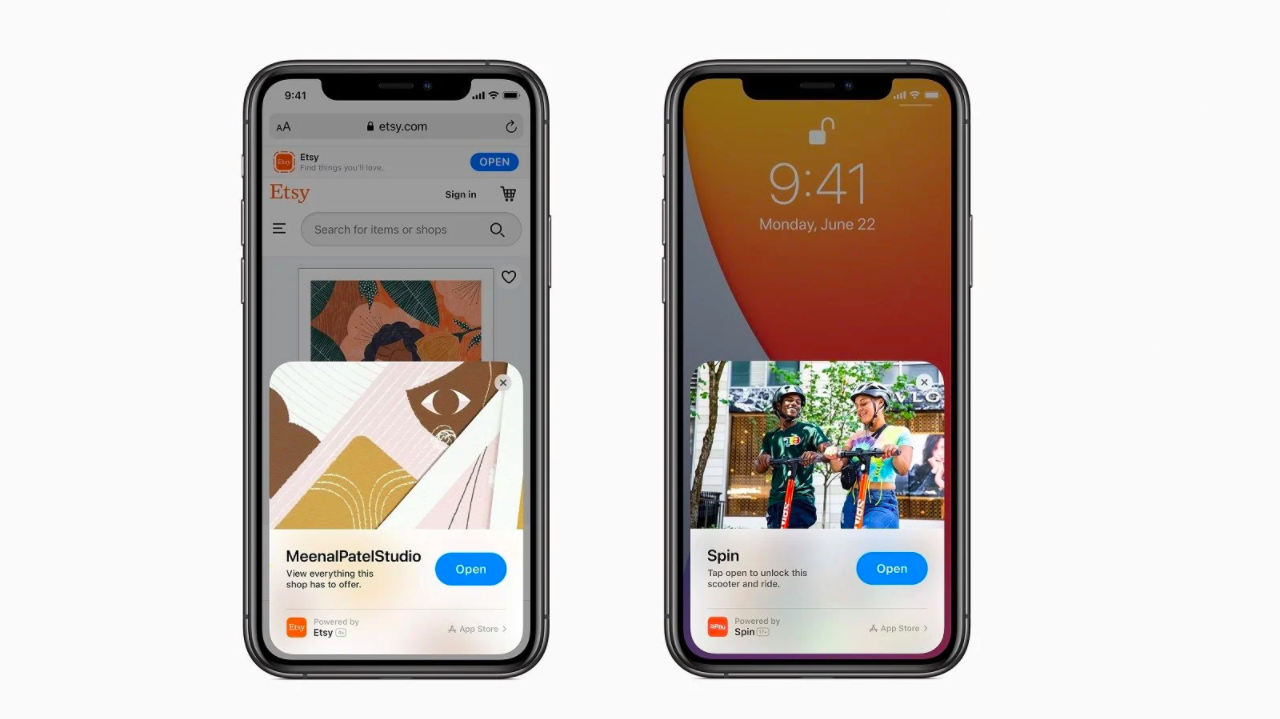
Image source: Screenrant
How to win back uninstalled users with App Clips
Users can access App Clips through QR codes, NFC tags, and links. These URLs can be shared via emails, SMS, social media advertisements, or push notifications.
Mobile marketers need to first create segments of uninstalled users based on their behavior in the app through tools like MoEngage. Next, you need to leverage SMS and email channels to remind them of the latest category they browsed or the latest movie they watched on your app, and add the link in this message. This is also a great way to direct more website users to your mobile app and increase installs.
2. App Library is going to pit you against your competitors in iOS 14
Apple has announced a one-stop-shop for apps called the App Library. Here, all installed apps will be bundled together in groups, most likely based on their category like Social, Entertainment, Health & Fitness, etc along with a search bar. iOS 14 users will also see a group titled “suggestions”, which will house all the apps Apple’s machine learning algorithm thinks you might be looking for.
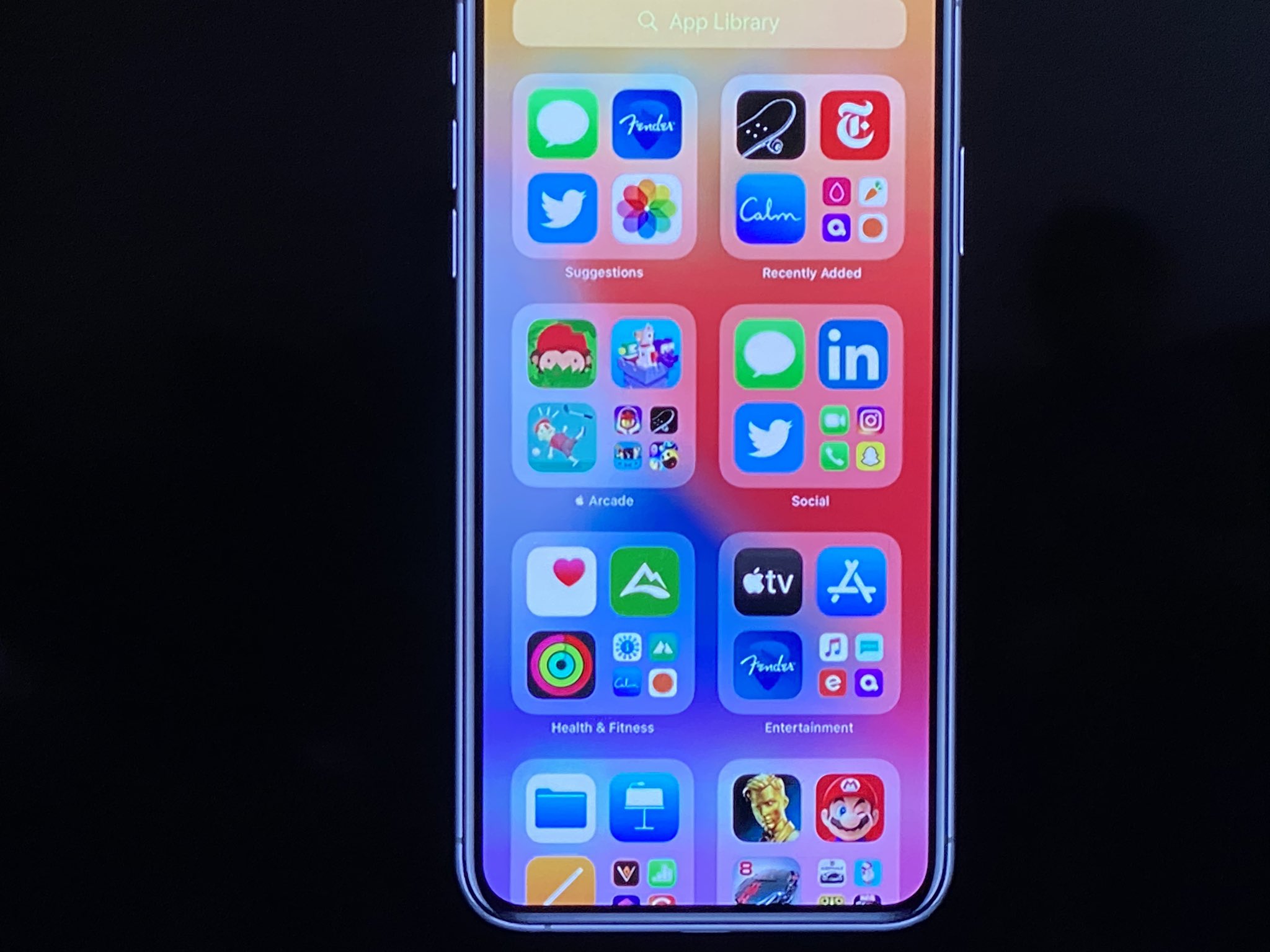
A look at the App Library as announced in WWDC 2020
For mobile brands, this means the fight for visibility is going to get tougher. Industries like online shopping, food delivery, travel, mobility, and OTT media are generally where a user has multiple options available on their phones. And the App Library will place you right next to your competitors in one bucket. This is a good reason to revisit your app experience and start working on making each individual’s experience more personalized.
3. Widgets will boost app launches and usage
Apple’s App Widgets have been a great way to drive app engagement for quite some time. In the WWDC 2020, Apple announced that iOS 14 users will be able to move their widgets anywhere across the home screen. Users will also be able to customize the size of each widget. If your app doesn’t have widgets, this is another one of many reasons to make them available to your users now.
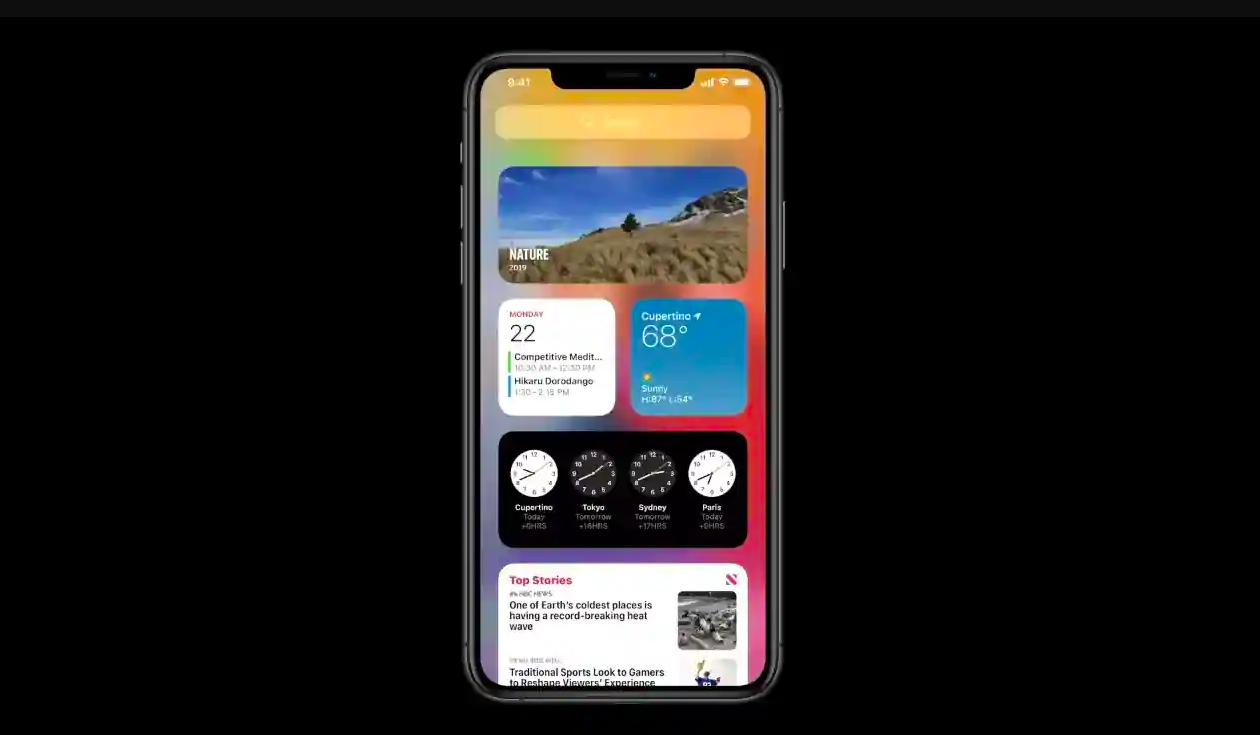
Widget updates for the iOS 14 (Image source: Hindustan Times)
4. Privacy continues to be the core focus for Apple
This year, Apple announced the following features that are bound to make it harder for online advertisers to track users and their activity:
- App privacy disclosure prompts. Apple will now ensure that your app users are well aware of what kind of data you collect from them. This will be shown to iOS 14 users in a dedicated UI. On this screen, users can see what data is linked to them (like browsing history or contacts) and what data is being used to track them (like location). Mobile marketers, please note that you will also have to disclose each data type you’re using to track your users across the web.

New privacy disclosure prompts available to iOS 14 users (Image source: ZDNet)
- Cross-app tracking permissions. If you enable cross-app tracking in your app, you’ll now have to get explicit permission from your users (similar to the push notification opt-in) to do so. This means users can opt-out of cross-app tracking.
- Availability of proxy locations. iOS 14 users will be able to share a proxy location with your app instead of their precise coordinates. If your services rely heavily on location (like dating or ride-hailing), this could pose a challenge to your offerings and can cause data trends to skew as well.
- Safari will show website trackers. This privacy update on Safari will allow users on their Macbooks to get information about all the tracking scripts on the websites they’re visiting.
5. Healthkit comes with new APIs for third-party Healthcare apps
iOS 14 and watchOS 7 users will be able to track 39 total symptoms – 13 new ones from the currently available set. These include mood changes, night sweats, diarrhea, wheezing, bloating, tiredness or fatigue, bladder incontinence, nausea, sleep changes, and sinus congestion.
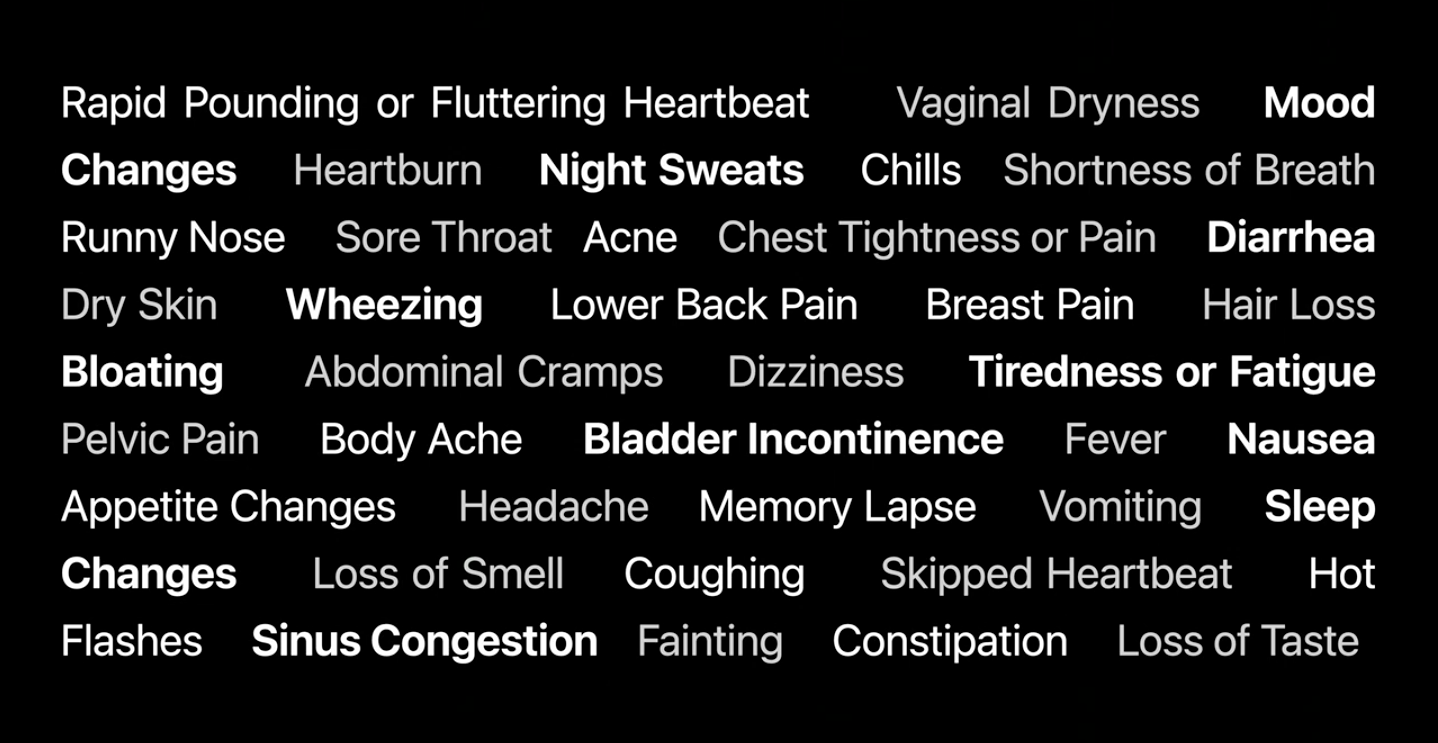
List of symptoms Apple users can track (Image source: Apple)
A big announcement from Apple this year was the availability of Healthkit APIs to third-party apps to read ECG data. If your mobile app is in the Health & Fitness vertical, this is good news! You can now explore new offerings as well as improve existing services by accessing this data – doctor diagnosis becomes better, suggestions for tests and medical kits improve, and you can recommend more personalized workout regimes.
Additionally, Healthcare apps can also now access the following information from Healthkit:
- Walking speed and step length
- Stair ascent and descent speed
- Walking asymmetry and double support percentage
If you’re interested in exploring how Healthcare apps can benefit from this, feel free to talk to our industry experts here.
Other major announcements in Apple’s WWDC 2020
iOS 14
- The new version of iOS will come with nifty updates. Users will be able to play any video in picture-to-picture mode, where the video will play in a window that can be moved around the screen allowing users to engage with other apps in the background. Users will also be able to adjust the size of the video window using the pinch gesture.
- Apple has also revamped Siri’s interface. Siri can now pop-up over any app instead of the full-screen window we see today. The new updated Siri also comes with support for a number of new languages. This works perfectly with the new Translate app that Apple will be providing natively with iOS 14. It will start with support for 11 languages with more getting added over time.
- Apple Maps will now be available in the United Kingdom, Canada, and Ireland. Maps will also come with a new design and a better user experience thanks to the addition of cycling routes in select cities, EV routing in select cities, green zones, and more.
- The Messages app and Memojis have gotten updates as well. iOS 14 users can pin important chats on top of the app, group messages get inline replies and mentions, and custom notifications for mentions in group threads. Users can also create customized group icons for group chats. Memoji will be getting new hairstyles, age options, and, of course, face masks!
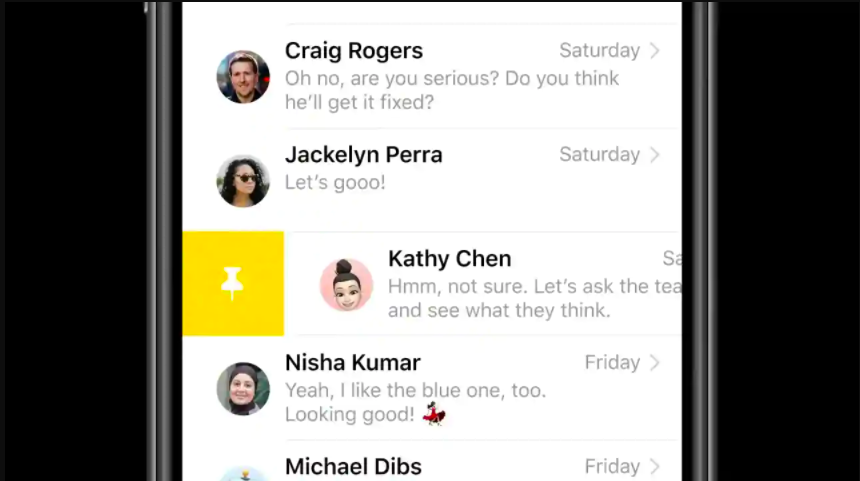
Update to the Messages App in iOS 14 (Image source: Hindustan Times)
- iOS 14 will also include a major CarPlay update. Users will get an array of new wallpapers, app support (like EV charging, connected driving, and more), and digital keys (while will allow users to access their cars without keys).
- Apple will make it easier to add new devices to the Home app by simply scanning all smart home devices. Users will also be able to select priority accessories. Apple will also add access to adaptive lighting for smart bulbs that can be controlled through the Home app, allowing users to define activity zones for important areas.
- iOS 14 users will also be able to assign specific shortcuts to the Backtap gesture. This feature lets users customize double and triple taps on the back of their iPhones to do things like open Control Center, take a screenshot, enable Accessibility features, initiate Shortcuts automation, and more!
iPadOS 14
- An incoming call on the iPad will now appear as a small notification on top instead of taking over the entire screen as it does currently. Apple has updated the Search tool in the iPadOS allowing users to search from either the home screen or any app.
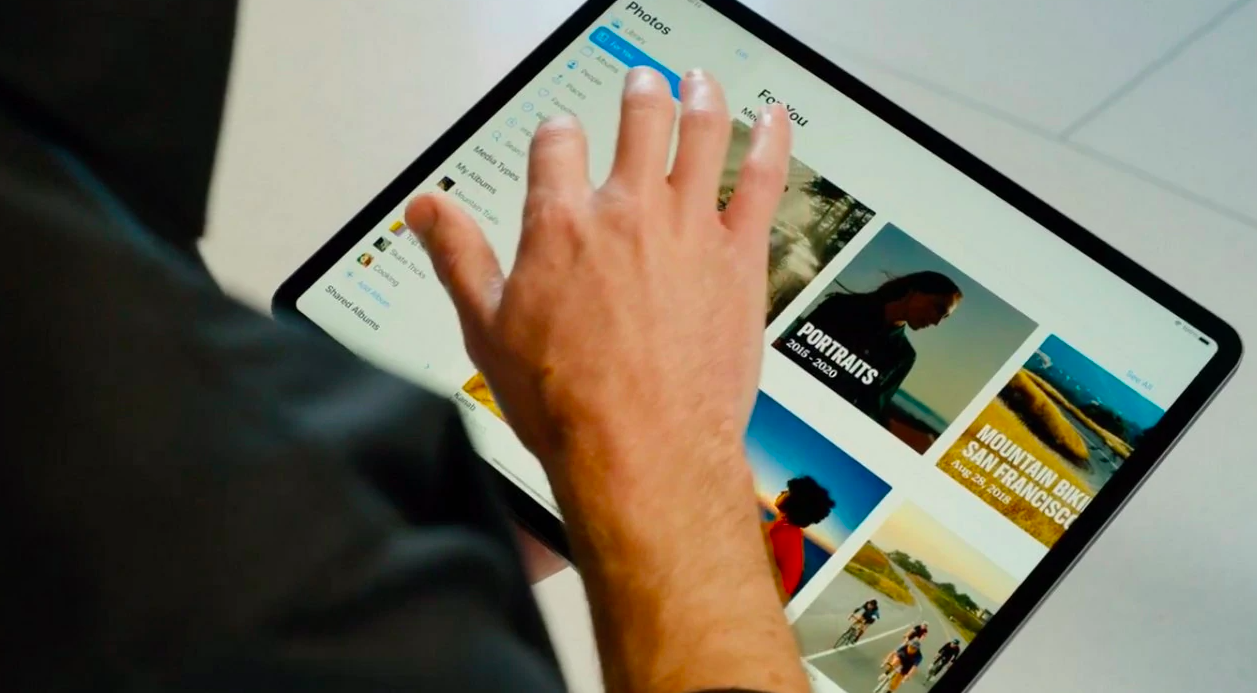
iPadOS 14 updates and new features (Image source: FirstPost)
- Apple has also improved the Apple Pencil by adding new features like enabling scribbling, improved handwriting recognition, smart selection, scratch to delete gesture, and better cut-paste options. This is a boon for digital artists and notetakers alike! Apple Pencil will also recognize phone numbers and prompt the call option.
- The iPadOS 14 and iOS 14 will come with the all-new Game Center, making it easy to discover and experience games with friends, access achievements, and leaderboards.
watchOS 7
- In the WWDC 2020, Apple announced that it will be introducing face sharing on the watchOS. Users can easily download customized watch faces from third-party apps on the watchOS 7 and share them with their contacts and on social media. App developers can offer pre-configured watch faces in their apps.
- Apple Watch users will also get cycling directions on the watchOS 7.
- There is a new Dance mode that Apple is introducing in the workouts app on the watchOS. The watch will track leg and hand movements during a dance, calculate the calories burnt during the performance. The workouts app will also get a summary tab allowing users to keep track of all their activities in one place.
- Sleep and handwashing detection are a few more features that have been added to the update. The Apple Watch will now tell the user how long they’re washing their hands.
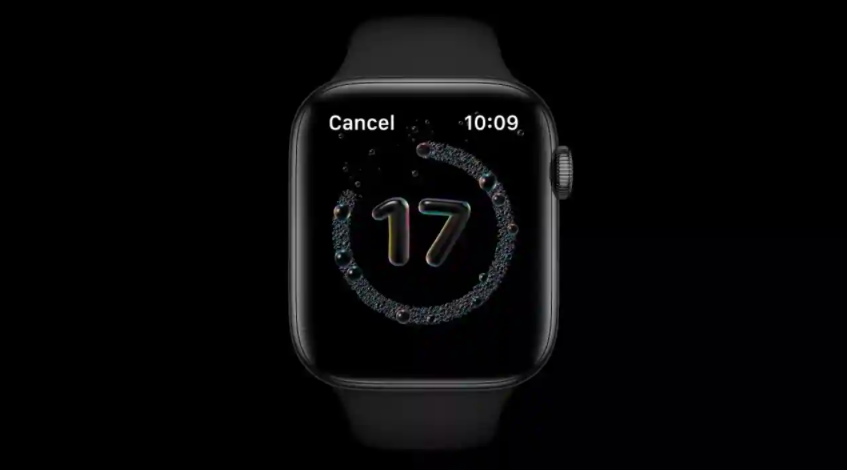
Handwash detection in the watchOS 7 (Image source: Hindustan Times)
- watchOS7 users will also be able to monitor sleep cycles, check their battery health and use Siri to announce messages in the Apple watch.
macOS Big Sur
- Apple announced the launch of its new OS for Mac – Big Sur, officially moving on from OS X to macOS 11.0.
- Remember the good ol’ chime we could hear when Macbooks booted up? Apple will be bringing it back with Big Sur.
- Big Sur will also come with an update to native Mac apps like Mail and Photos. The same design from iPadOS will make its way to the macOS.
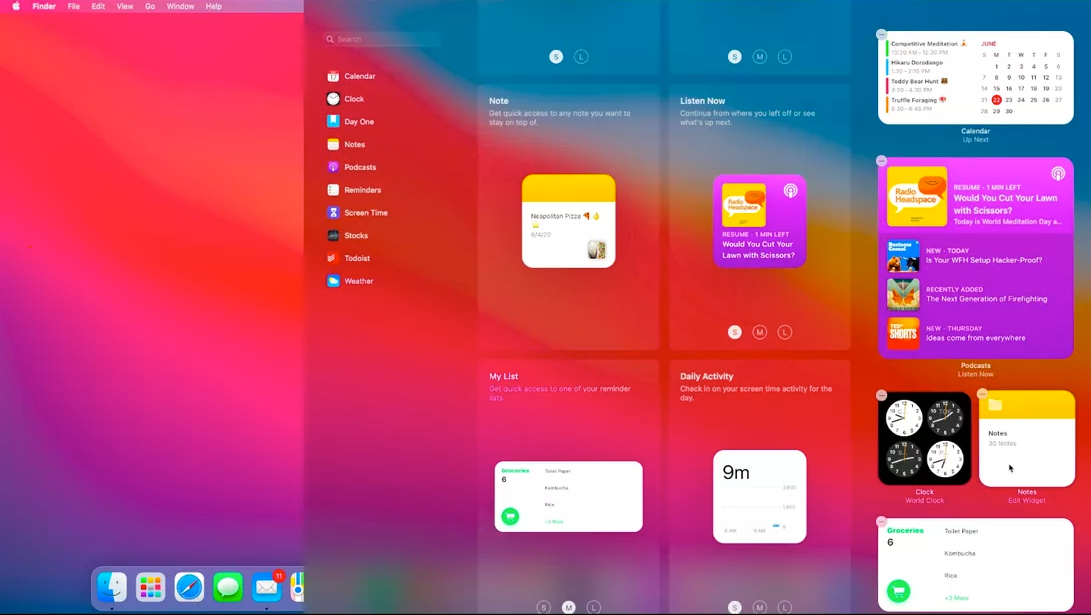
macOS Big Sur announced in the WWDC 2020 (Image source: CNET)
- Apple has also announced that Big Sur will come with its own Control Panel.
- The App Store on macOS will also be getting its own tab for Safari extensions.
- macOS 11.0 Big Sur will also see an update in Apple Maps allowing users to add Favourites and friends’ ETA updates across Apple devices.
- In the past, marketers have had to struggle with limited real estate available for Web Push Notifications. With Big Sur, marketers will now be able to add two lines of text in the Web Push Notification and add a custom icon or image that does not reduce the available real estate. Additionally, Apple has ensured that notifications will stay on the user’s screen until they click or close them.
- A big update for Big Sur also includes the addition of battery estimate, helping users get their Mac batteries checked before it’s too late.
Safari
- One of the biggest highlights of the WWDC 2020 was Apple’s claim that Safari will load pages 50% faster than Google Chrome. Apple also mentioned that Safari users will be able to get more info on the privacy settings and policies of websites than when they visit using Google Chrome.
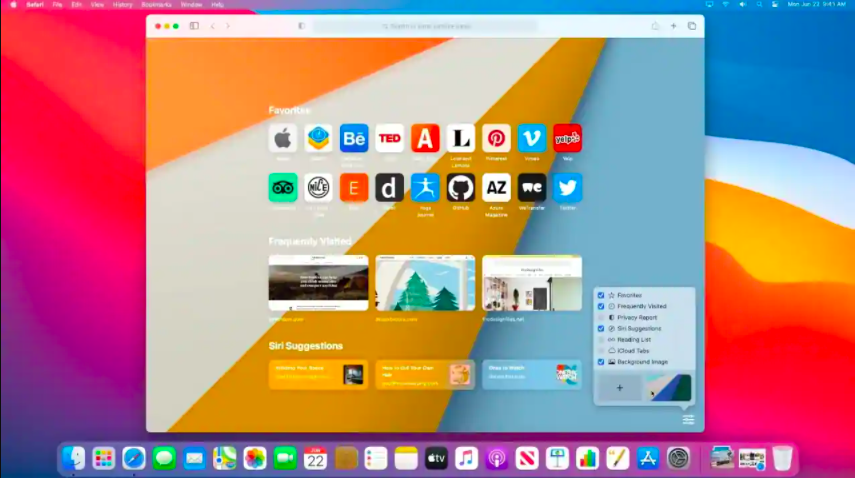
Safari customizations (Image source: Hindustan Times)
- The next major update for Safari will include the option for users to choose how long a particular browser extension will stay active on websites.
- Safari will also be getting a native translation functionality, allowing users to be able to easily traverse websites in languages they’re not familiar with.
- A big announcement for Safari users was the announcement of the WebExtension API. This cross-platform technology means Mac users will be able to install the same extensions available to other web browsers, including support for Google’s WebP image format.
- Safari 14 users will also be able to bypass username and password fields with Face ID or Touch ID.
Intel -> ARM migration
- Apple announced that they will be transitioning from Intel CPUs in Macs to silicon processors of its own design, based on the ARM architecture.
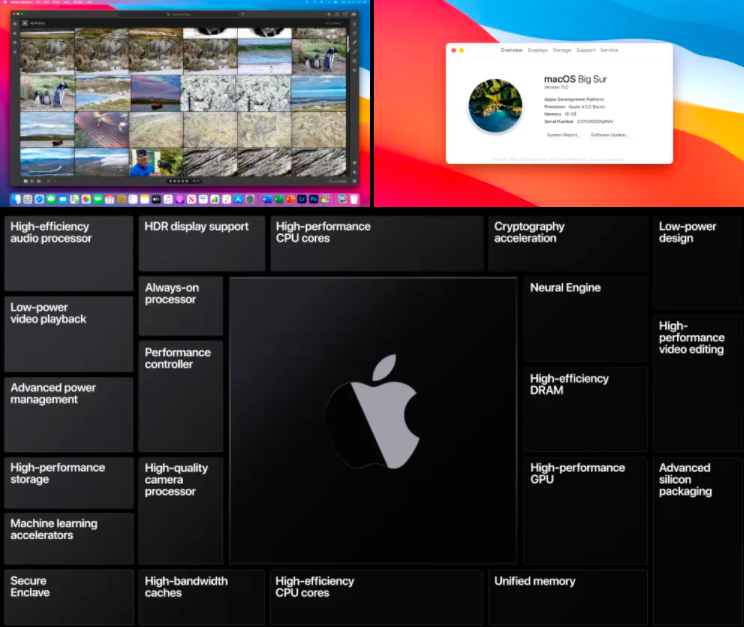
A glance at Big Sur running on ARM (Image source: 9t05Mac)
- The first ARM Mac will be shipped before the end of 2020, and within two years there will be a complete migration from Intel to ARM.
- The macOS Big Sur will come with its own applications that support the new Apple chips natively – including Final Cut Pro. Developers can get started by recompiling their apps in the new version of Xcode.
- Apple has also announced that key partners like Adobe and Microsoft have gotten many of their apps running on ARM already.
- This move is welcomed since now Apple will bring industry leading-performance with its custom chips, which also includes a Neural Engine for machine learning applications.
Keep an eye on this space by bookmarking this article or subscribing to our newsletter below. We’ll add more live updates for mobile brands and Apple users in the next few days!














